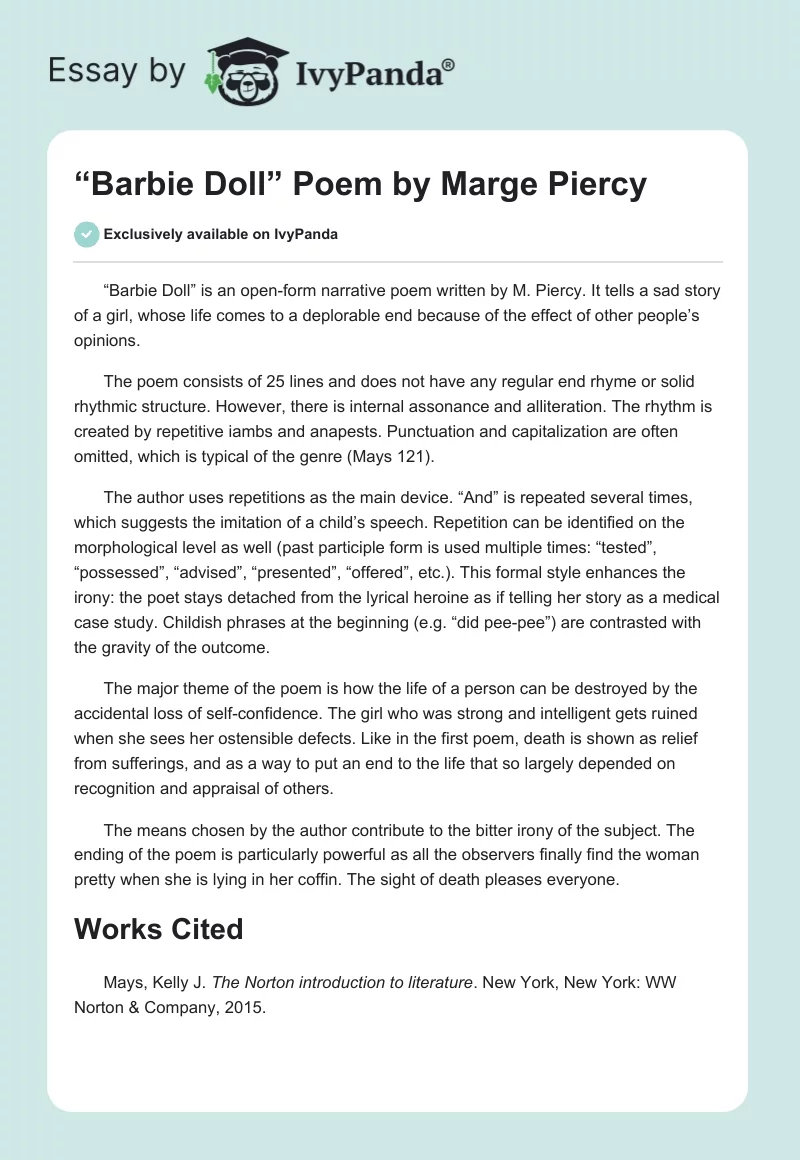“Barbie Doll” is an open-form narrative poem written by M. Piercy. It tells a sad story of a girl, whose life comes to a deplorable end because of the effect of other people’s opinions.
The poem consists of 25 lines and does not have any regular end rhyme or solid rhythmic structure. However, there is internal assonance and alliteration. The rhythm is created by repetitive iambs and anapests. Punctuation and capitalization are often omitted, which is typical of the genre (Mays 121).
The author uses repetitions as the main device. “And” is repeated several times, which suggests the imitation of a child’s speech. Repetition can be identified on the morphological level as well (past participle form is used multiple times: “tested”, “possessed”, “advised”, “presented”, “offered”, etc.). This formal style enhances the irony: the poet stays detached from the lyrical heroine as if telling her story as a medical case study. Childish phrases at the beginning (e.g. “did pee-pee”) are contrasted with the gravity of the outcome.
The major theme of the poem is how the life of a person can be destroyed by the accidental loss of self-confidence. The girl who was strong and intelligent gets ruined when she sees her ostensible defects. Like in the first poem, death is shown as relief from sufferings, and as a way to put an end to the life that so largely depended on recognition and appraisal of others.
The means chosen by the author contribute to the bitter irony of the subject. The ending of the poem is particularly powerful as all the observers finally find the woman pretty when she is lying in her coffin. The sight of death pleases everyone.
Works Cited
Mays, Kelly J. The Norton introduction to literature. New York, New York: WW Norton & Company, 2015.

